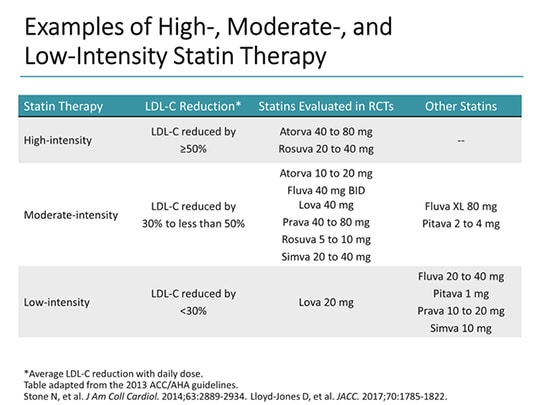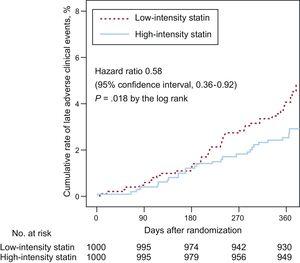


Patients receiving high intensity therapy had a one year mortality rate of 4% compared with 4.8% for those receiving moderate intensity therapy, 5.7% for those receiving low intensity therapy, and 6.6% for those receiving no statin.Īfter adjustment the hazard ratio for mortality was 0.91 (95% CI, 0.88-0.93) for those receiving high intensity statins compared with moderate intensity statins. Low intensity treatment was defined as fluvastatin 20 to 40 mg, lovastatin 20 mg, pitavastatin 1mg, pravastatin 10 to 20 mg, and simvastatin 10 mg.ĭuring a mean follow-up of 492 days there was a graded association between the intensity of statin therapy and mortality. Moderate intensity therapy was defined as atorvastatin 10 to 20 mg, fluvastatin 40 mg twice a day or 80 mg once a day (extended release formulation), lovastatin 40 mg, pitavastatin 2 to 4 mg, pravastatin 40 to 80 mg, rosuvastatin 5 to 10 mg, and simvastatin 20 to 40 mg.

High intensity treatment was defined as atorvastatin 40 to 80 mg, rosuvastatin 20 to 40 mg, or simvastatin 80 mg. The average age of the patients was 69 years with 29.6% receiving high intensity statin therapy, 45.6% moderate intensity statin therapy, 6.7% low intensity statin therapy, and 18.2% receiving no statin. The researchers examined one year cardiovascular mortality by intensity of statin therapy among 509 766 adults with atherosclerotic cardiovascular disease treated in the Veterans Affairs healthcare system. The retrospective cohort analysis published in JAMA Cardiology showed that high intensity statins were associated with a small but significant survival advantage compared with moderate intensity statins, including among patients over 75 years. Patients with atherosclerotic cardiovascular disease who received the highest intensity statin treatment showed the greatest reductions in mortality, data from more than half a million patients have shown.


 0 kommentar(er)
0 kommentar(er)
